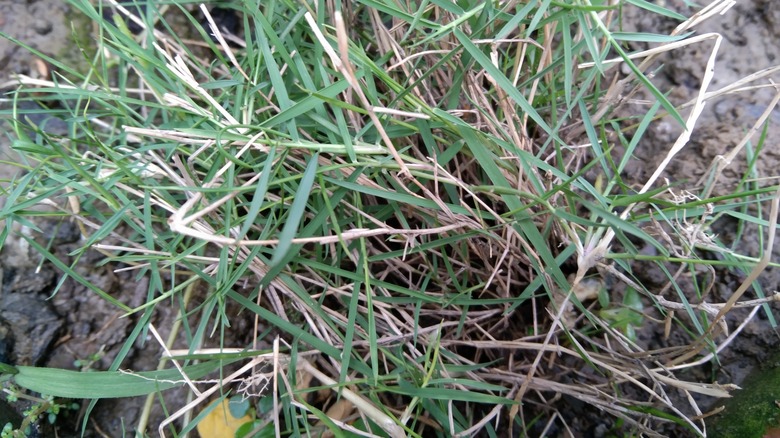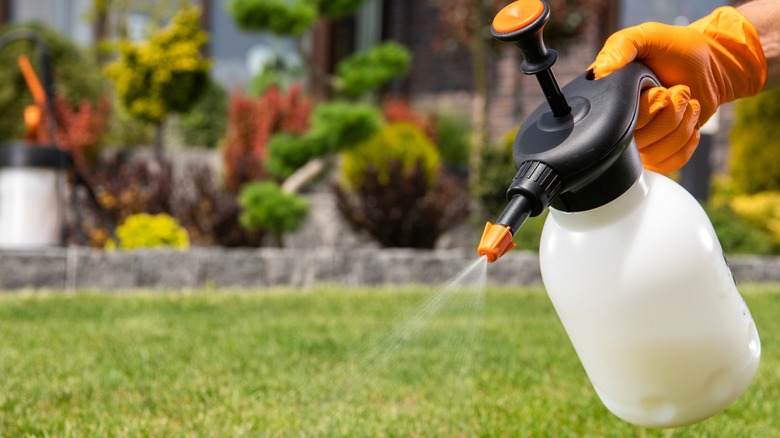Discovering torpedograss in your lawn can be disheartening. This fast-spreading, common garden weed can quickly take over, disrupting the uniformity and health of your grass. If you’re facing this unwelcome guest, you’re not without options. There are several effective methods to eradicate torpedograss, including physical removal techniques. However, the use of herbicides stands out as the best recourse since this weed can be quite persistent.
Before diving deeper into the solutions, it’s crucial to understand what you’re dealing with. Torpedograss, originating from Asia and Africa, has become a notorious weed in many parts of the world, particularly in warmer climates. Its name comes from the torpedo-shaped tips of its rhizomes, which hint at its aggressive nature.
This plant is not just tough; it’s invasive, thriving in various environments. When a plant is invasive, it can grow and spread aggressively outside its native range, often to the detriment of local ecosystems and species. Torpedograss epitomizes this definition, adapting to a variety of environments, from damp wetlands to the more domestic settings of backyard lawns. Its resilience and capacity to spread quickly make it a significant challenge for gardeners and homeowners alike. The secret to torpedograss’ success lies in its ability to recover from control efforts that would easily dispatch less hardy plants. This ability to bounce back, combined with its rapid growth, requires the frequent use of a broad-spectrum herbicide.
How to identify torpedograss

Spotting torpedograss early on is crucial for keeping it under control. This grass stands out due to its dense, sprawling growth pattern and its stiff, upright leaves that can shoot up quite a few inches above the ground. The leaves themselves have a smooth texture but might feel a tad rough along the edges. They also sport a deeper shade of green than the typical lawn grass, making them somewhat easier to spot among your desired turf. Torpedograss doesn’t skimp on seed production. Each plant can boast a panicle of flowers. But the real trouble lies beneath the surface. The rhizomes of torpedograss, a network of tough, white roots, are the plant’s secret weapon. These rhizomes are not only robust, but can stretch out several feet underground in a single growing season. They are also notorious for their resilience, retaining up to 60% of their initial fresh weight even under dry conditions. This high tolerance to desiccation allows the plant to survive and even thrive under less-than-ideal moisture levels.
Their strength and depth make pulling torpedograss out by hand a daunting task. Even if you manage to cut them, they have the uncanny ability to regenerate, pushing up new shoots with vigor. You’re dealing with a plant that can grow tall, up to several feet in some cases, and spread rapidly through both its seeds and its underground network. Understanding this dual threat of seed dispersal and rhizome expansion is key to effectively tackling torpedograss in your lawn.
What are the best control methods for torpedograss?

When tackling torpedograss, you’re can employ several strategies, yet reaching for herbicides often proves to be the most efficient route for getting rid of weeds in larger outbreaks. Products laced with glyphosate, like the well-known Roundup, are frequently the go-to. This broad-spectrum herbicide doesn’t play favorites; it kills torpedograss but will also take out any other greenery it touches. Precision in your application is key to ensure you only hit the unwanted guests. Then there’s imazapyr, an ingredient in solutions such as Ortho GroundClear, offering a strong punch against torpedograss in spaces where it reigns supreme. It’s crucial, however, to adhere strictly to the directions on the label to sidestep any accidental damage to the plants you want to keep.
As you might gather, torpedograss is not one to go down without a fight. The idea of simply mowing it down or skimming off the top won’t get you far in this battle. For those smaller, more manageable invasions or in scenarios where herbicides aren’t an option, getting down and dirty with hand-pulling or digging is your best bet. Brace yourself for a bit of a workout, though. You’ll need to dig deep to unearth the entire network of rhizomes to prevent any comeback attempts. While less frequently advised, burning presents another method of attack. However, this approach requires caution due to fire hazards and the potential negative impact on the soil’s health and the microorganisms that enrich it.



